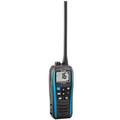Yacht Charter Cala D`Or

Blue Coast Charter

 gift
giftBlue Coast Charter

Showing 2
Save to selection
The winds of Cala D`Or
Mistral (NW)
Mistral winds can affect the weather in Cala D'Or, particularly during the winter months. These winds are typically strong and dry and blow from the northwest. During the summer months, Mistral winds can bring cool air to Cala D'Or, providing relief from the heat and making outdoor activities more enjoyable. However, during the winter months, Mistral winds can be much stronger and can cause rough seas and high waves, making it difficult for boats to navigate. Despite the potential for strong winds, Cala D'Or is a popular destination for outdoor enthusiasts and water sports enthusiasts, offering a variety of activities such as sunbathing, swimming, diving, and sailing. Visitors can also enjoy the area's beautiful beaches, charming villages, and rich cultural heritage.
Mistral (NW)
Mistral winds are actually strong, cold, northwesterly winds that can affect many parts of the Mediterranean, including the Cala d'Or area of Spain. These winds are caused by a high-pressure system in the Gulf of Genoa, which pushes the air down towards the western Mediterranean, and then funnels it through the Pyrenees and into the Gulf of Lion. As the air accelerates through the mountain passes, it can reach speeds of up to 100 km/h (62 mph) and cause rough seas, high waves, and reduced visibility.
Mistral (NW)
Mistral winds are dry and cold northwesterly winds that blow through Cala D'Or, a resort town on the southeast coast of the island of Mallorca, in the Balearic Islands of Spain. These winds can bring gusts of up to 100 km/h (62 mph) and are most commonly experienced during the autumn and winter months.
Bora (NE)
Bora winds are not common in Cala D'Or or the Balearic Islands. Bora winds are a type of wind that primarily affects the Adriatic Sea, particularly the coastal regions of the Balkan Peninsula, and are not typically associated with the Balearic Islands, which are located in the western Mediterranean Sea.
Bora (NE)
The Bora winds are actually more commonly associated with the Adriatic Sea region, particularly the area around Trieste, rather than Spain. However, Cala D'Or is located on the southeastern coast of the island of Mallorca in the Balearic Islands of Spain, and the prevailing winds in this region are generally from the east or northeast. These winds can sometimes be gusty and can create choppy seas, but they are not typically referred to as Bora winds. It is possible that the term "Bora" may be used colloquially in this region to describe particularly strong or gusty winds, but it is not a term commonly used to describe the prevailing winds in the area.
Bora (NE)
Bora winds, also known as the "Nordic" winds, are cold and dry northeasterly winds that blow through Cala D'Or, a resort town on the southeast coast of the island of Mallorca, in the Balearic Islands of Spain. These winds can bring gusts of up to 70 km/h (43 mph) and are most commonly experienced during the autumn and winter months.
Tramontana (N to NW)
Tramontana winds can significantly affect the weather in Cala D'Or, particularly during the winter months. These winds are typically strong and dry and blow from the north to northwest. Tramontana winds can bring cooler temperatures to Cala D'Or, making outdoor activities more enjoyable during the summer months. However, during the winter months, these winds can be very strong and can cause rough seas and high waves, making it difficult for boats to navigate. Despite the potential for strong winds, Cala D'Or is a popular destination for outdoor enthusiasts and water sports enthusiasts, offering a variety of activities such as sunbathing, swimming, diving, and sailing. Visitors can also enjoy the area's beautiful beaches, charming villages, and rich cultural heritage.
Tramontana (N to NW)
Tramontana winds are another type of wind that can affect the Cala d'Or area of Spain, especially during the cooler months. These winds are usually north to northwesterly and are caused by a high-pressure system that forms over the Bay of Biscay and moves down towards the western Mediterranean. As the air moves over the Pyrenees and into the Gulf of Lion, it can gain speed and strength, reaching gusts of up to 80 km/h (50 mph).
Tramontana (N to NW)
Tramontana winds are dry, cold and often strong winds that blow from the north or northwest through Cala D'Or, a resort town on the southeast coast of the island of Mallorca, in the Balearic Islands of Spain. These winds can bring gusts of up to 100 km/h (62 mph) and are most commonly experienced during the autumn and winter months.
Jugo (SE)
Jugo winds are not common in Cala D'Or or the Balearic Islands. Jugo winds are a type of wind that primarily affects the eastern coast of Italy, Slovenia, Croatia, and Montenegro, and are not typically associated with the Balearic Islands, which are located in the western Mediterranean Sea.
Jugo (SE)
The Jugo winds, also known as Sirocco or Scirocco, are hot and humid winds that blow from the southeast and originate from the Sahara desert. They are more commonly associated with the Mediterranean region, including Spain, and can occur in Cala D'Or, especially during the summer months.
Jugo (SE)
Jugo winds, also known as Sirocco or the "South Wind," are warm and humid southeasterly winds that blow through Cala D'Or, a resort town on the southeast coast of the island of Mallorca, in the Balearic Islands of Spain. These winds can bring high levels of humidity, rain, and sometimes even dust from the Sahara desert, and are most commonly experienced during the spring and autumn months.
FAQ
Free Deposit Pack
With FDP (Free Deposit Pack), you have the chance to avoid a full security deposit and lock in your funds. Just pay 20% upfront (non-refundable), and experience a hassle-free journey. * The price of the FDP rises to 25% if booked less than 30 days before the charter.

































